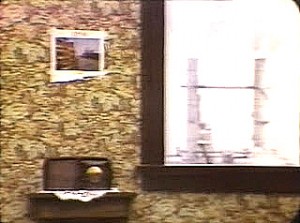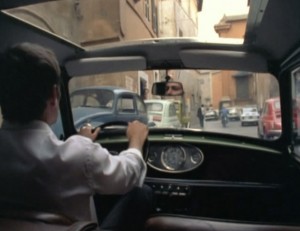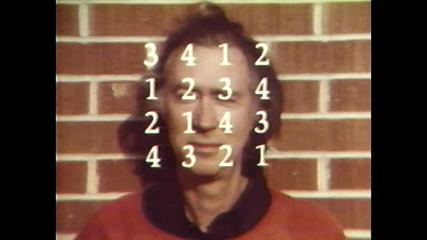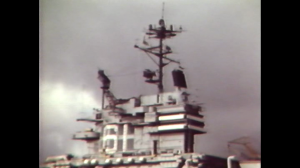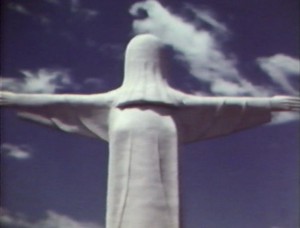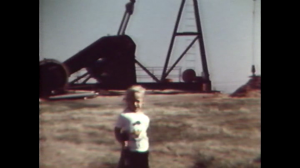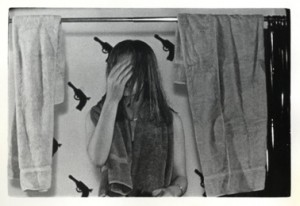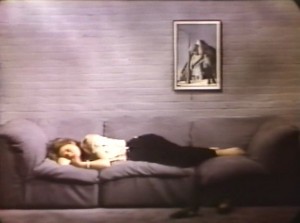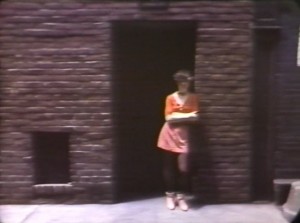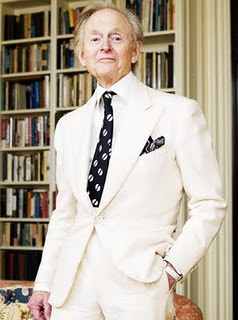The longest chapter in my book Film: The Front Line 1983 (Arden Press) — which only recently went out of print, though it’s still available from Amazon. I’m sorry that some of the illustrations aren’t of better quality. I’ve done a light edit on the text.
Considering that Benning by now probably has dozens of features to his credit rather than merely four, and that some of these are staggering achievements, I’m not at all sure if my judgments of three decades later would be the same. It’s also worth mentioning that I’ve written about a good many of his subsequent films, including (on this site) Landscape Suicide (1987), Used Innocence (1989), North on Evers (1992), Deseret (1995), Four Corners (1998), Utopia (1998), El Valley Centro (2000), his California Trilogy (2000-2004), Ten Skies (2004), One Way Boogie Woogie/27 Years Later (2005), and RR (2009), often at some length. It’s a pity that most of these films aren’t readily available, but I’m happy to report that the Austrian Film Museum (https://www.edition-filmmuseum.com/) , which published the first substantial book about James Benning in 2007, has launched the long-overdue project of restoring and releasing Benning’s work on DVDs — beginning with American Dreams (lost and found) (1984) and Landscape Suicide, in a two-disc set with a 20-page booklet, for 29,95 Euros, and followed by several more such packages. — J.R.
JAMES BENNING
Born in Milwaukee, Wisconsin, 1942
1972 — Time & A Half(16mm, b&w, 17 min.)
Art Hist. 101 (16mm, b&w & color, 17 min.)
1973 — Honeylane Road (16mm, color, 6 min.)
Michigan Avenue (made with Bette Gordon) (16mm, color, 6 min.)
1974 — 8 ½ x 11 (16mm, color, 33 min.)
i94 (made with Bette Gordon) (16mm, color, 3 min.)
1975 — The United States of America (made with Bette Gordon) (16mm, color, 25 min.)
9/1/75 (16mm, color, 22 min.)
1976 — Chicago Loop (16mm, color, 9 min.)
11 x 14 (16mm, color, 77 min.)
1977 — One Way Boogie Woogie (16mm. color, 60 min.)
1979 — Grand Opera: An Historical Romance (16mm, color, 90 min.)
1982 — Him and Me (16mm, color, 88 min.)
The first two things that are likely to impress you about a shot in a James Benning film are the formal beauty and its capacity to evoke the most passionate and trivial kind of nostalgia for industrial waste of one kind or another. The fact that these two qualities tend to diverge more than mesh produces a disquieting sense of absence common to Edward Hopper paintings and Antonioni films, a sense of endless waiting and boundless yearning that haunts his landscapes like a specter.
Sometimes one can puzzle over how lovely a frame Benning can compose out of a patch of blue sky, a grassy hill, and a red billboard advertising Winstons — a symmetrical, three-color triptych composition that’s quite characteristic of his work — without ever getting around to considering in any detail what the narrative subject of the shot actually is. If that makes Benning a formalist, there are other moments in his work when one can see him trying to move in the opposite direction. For instance, in portions of his latest feature, Him & Me, he is quite capable of deliberately letting one lose all interest in the putative, minimal interest and be taken over by the soundtrack for minutes at a time, so that the subject annihilates the form — as in the 11-minute shot of a 1954 wall calendar, radio, and window, accompanied by lawyer Joseph Welch’s celebrated reprimand of Senator Joseph McCarthy during the Army-McCarthy Hearings. But even here, Benning’s intentions are by his own account mainly formal, so that even after one’s concentration is taken over almost entirely by the recording, the sight and sound of passing trucks as seen through the window suffice to pull one back into the image.
As an undifferentiated slab of material — important in an environmental way to Benning’s youth, but not ostensibly relevant to either his life or the film in any more specific way — these hearings are something that Benning can play against but not with, which indicates one of the limitations of his approach. On the other hand, considering the degree to which Benning is a compulsive recycler of his own materials and those of others, there is a lot of play with the different uses to which a shot can be put. 11 x 14, for example, takes 11 shots from the earlier 8 1/2 x 11 — one-third of the 33 one-minute shots — and uses them in a different order, “surrounded,” as Benning puts it, “by much more information, which makes it more confusing.”
In the same film, an 11-minute take of a nude couple lying on a bed and making love is accompanied by Bob Dylan’s “Black Diamond Bay,” playing on a nearby record player; later in the film, the same song, without a narrative source, accompanies another 11-minute shot, this one of smoke pouring out of a smokestack. Next, in One Way Boogie Woogie, Benning uses an extended take of another smoking chimney, this time accompanied by Cab Calloway’s “Calloway Boogie,” to refer us back to 11 x 14. Then, in Grand Opera, Benning re-edits ten shots from One Way Boogie Woogie in a different ordering system — cutting them according to the digits of pi, with each shot representing a separate digit.
In short, Benning’s work tends to be highly self-referential, and he doesn’t expect everyone in his audiences to keep up with all these references. Sometimes the most direct and personal of these references, like the poster for J&B whisky in 11 x 14, are also the most arch. Some knowledge of these references obviously helps to clarify the meaning and/or function of certain shots: when I was finally able to see 8 ½ x 11, the earliest Benning film that I‘m familiar with, the 11 shots that are later reused in 11 x 14 immediately became much more legible.
Indeed, 8 ½ x 11 is the most easily read of Benning’s films that I’ve seen in terms of narrative coherence. Two minimal “road” plots alternate, virtually on a shot-by-shot basis, until the last shot, when they briefly cross paths. In the first plot, much of which later turns up reshuffled in 11 x 14, two women in a car pick up a couple of men who are hitchhiking and then eventually drop them off. In the second plot, we follow another male traveler, solitary, traveling on smaller roads and, as Benning puts it, “interacting more with the landscape” -– working briefly on a farm, for instance. In the final shot, the woman drive over a bridge while the man is bathing in the river below. Their car slows down, almost as if to get a better look at him, before continuing out of the frame, and in a way this brief confrontation of narrative trajectories recalls the moment at the precise center of Jacques Rivette’s Out 1: Spectre (a movie that appeared, interestingly, the same year), when Jean-Pierre Léaud and Juliet Berto -– the two connecting links between all the other characters and plots in the film –- briefly cross paths in a boutique where Bulle Ogier works, significantly called l’Angle du Hasard.
Another important European cross-reference seems worthy of citation here. Film scholar and historian David Bordwell has informed me that prior to making 8 ½ x 11 in 1974, Benning was working as Bordwell’s teaching assistant at the University of Wisconsin’s Madison campus (where he was pursuing an MFA) and became especially interested in Jacques Tati’s Playtime, which Bordwell was teaching at the time. With the benefit of hindsight, it is indeed tempting to see some possible influence of the separate narrative trajectories of the main characters in that film — Hulot, Giffard, Barbara — over the same terrain (which in the case of Playtime is exclusively urban). The points at which these characters cross paths and eventually meet can be singled out as key privileged moments around which the entire dispersed narrative of Playtime is structured.
Regarding their respective titles, to cite Benning’s own explanation, 8 ½ x 11 are the dimensions of a sheet of typing paper, 11 x 14 the dimensions of a sheet of photographic paper. 11 x 14 starts, in a way, where 8 ½ x 11 ends –- with two characters who remain separate for the remainder of the film coexisting in the same shot, in this case with a stronger narrative connection: a man and a woman saying goodbye in long shot, beside a wall and hill under railroad tracks, and walking off in opposite directions. They are never seen again within the same frame; in the last two shots of the film each of them — first the woman, then the man –- is made to seem to disappear into the image itself.
In the first case, featuring what may well be the most elaborate mise en scène and most melodramatic action in the film, the two woman and two men on the road enter a corner tavern called Mickey’s, and the camera waits patiently across the street. Eventually one woman runs out and looks around as the two men emerge as well; the latter two break into a fight and fall to the ground just as a truck rounds the corner near the camera and parks, blocking off a significant part of the action. Then the truck driver opens the back of his vehicle, totally ignoring the scuffle that is now occurring off-screen and thereby shutting out even more of the putative (if hyperbolic) story; the woman meanwhile runs off into the distance, down the sidewalk beside Mickey’s. The film’s final shot — less interesting and more prosaic — shows the man on a golf course hitting his ball out of bounds and walking out of frame to retrieve it; the camera pans after him a little, but misses him. As Benning puts it, “My idea was to have the narrative itself being swallowed up by the form of the film, being consumed by it.”
The first really long take in 11 x 14 is of the man in the opening shot riding on the Chicago El –- a handsome, epical 11-minute shot framed by front and side windows on the train, the silhouetted figure of the man appearing over the front window. Once again, it is difficult not to think of a contemporaneous European counterpart to this sequence –- namely, the lengthy car rides though Rome in Straub-Huillet’s History Lessons,which are similarly built around a central anonymous male figure, and front and side windows framing the surrounding scenery.
Throughout 11 x 14, silhouettes and shadows seem emblematic of off-screen, implied narratives, elliptical plots (or allusions to same) that never quite assume a central emphasis or focus. A series of formal permutations are played with these teasing story fragments, including tricks with memory and camera placement. (A long episode with one of the women in a filling station concludes with a camera angle that relocates the setting in the realm of the familiar, a place we’ve been before.) Individual shots can come across as mainly enigmatic (a man leaning against a white wall, putting on lipstick), graphic (zebras in a zoo), poignant (the marquee of the Coronet, an old Balaban & Katz moviehouse, complete with missing letter: “The Man Who Would Be Ki g”), tricky (a woman in a chair reading beside a TV, also facing us, which shows us Doris Day and Rock Hudson in split-screen — one of Benning’s goofiest triptych notions), unreal (an enormous moon over a house whose enormous, upholstered front lawn dominates the shot), liquid (the protracted lesbian scene cited above, as gracefully slow as Dreyer or molasses), or simply evocative (the magisterial Winstons billboard). They are nearly always elegant.
One Way Boogie Woogie, Benning’s masterpiece to date, is also probably the most structured of his films, as well as the purest, comprising 60 one-minute shots in which the camera remains motionless. Benning cites the film as one of his own favorites, but adds that “it’s the most difficult to watch for general audiences, because it’s the least narrative. It uses a lot of narrative devices, but at the same time doesn’t pretend to be narrative like the other films.” One should note, however, that even at their most difficult, Benning’s films are the easiest to watch of any non-narrative films that come to mind.
The title refers to Piet Mondrian’s painting “Broadway Boogie Woogie,” the “One Way” deriving from the preponderance of one-way signs in the film — both suggesting together a certain formalist and minimalist rigor that the film certainly lives up to. But at the same time, Benning’s aim has a personal and documentary aspect — specifically, the desire to document an industrial valley where he grew up and played as a child, an area comprising about two square miles. “In the late Sixties, and early Seventies, most of it was being ripped down and replaced by buildings that were fabricated out of metal, much cleaner and less interesting than those that were there before.”
As elsewhere in Benning’s work, the shots tend to be perpendicular to flat surfaces, with frequent use of a wide-angle lens enabling Benning to introduce sudden changes in depth cues by bringing people or objects into the foreground. Another characteristic Benning touch is a tendency to turn many of the one-minute “compositions” — each a separate mini-film in a way –into a kind of game or puzzle that has to be solved. One shot which features a man’s large, protruding stomach has an off-screen male voice reading a math problem invented by Benning ( a former college math teacher) and translated into French — a problem about painting boxes red, yellow, and blue, which refers to the film’s use of primary colors. A couple of other self-references in the film show the flat surface of the frame being measured by a ruler (it comes to 11″ x 14″!), and a spool of red twine being unwound in a railroad yard by a woman and man to measure the z-axis, or the shot’s depth.
Another example of Benning’s obscure playfulness: a closeup of an American flag waving in the wind, accompanied by a male voice speaking in German. The solution to the puzzle? The flag is in Milwaukee County Stadium; the voice is that of a sportscaster describing a baseball game in which the Brewers are playing. German is used because of Milwaukee’s ethnic background, and the batter is named Johns — which for Benning makes reference to Jasper Johns’ flag paintings. A very strange and striking shot which shows two women standing outside on opposite sides of a front door and leaning against the building, one drinking a can of Coke and the other taking puffs from a cigarette, both in precise synchronous relation to the sounds of an offscreen foghorn and ringing phone, has an autobiographical/historical aspect for Benning that nicely balances the strictly formal side. It derives from his memories of junior high school: “There were a number of people at noon who wouldn’t eat lunch but would go into a back alley and drink Cokes and smoke cigarettes. I always thought that was a strange way to take a lunch break.”
Even without this information – or the supplementary fact that these two women are twins – the shot remains a staggering achievement, an uncanny, rhythmic coupling of sound and image that never ceases to fascinate, even in its irrationality. Yet the combination of nostalgia with formalism undoubtedly leaves its mark regardless of whether or not one decodes the specific references. Elsewhere, the use of Johnny Mathis’s record of “Chances Are” to accompany a chimney spouting smoke and flames contextualizes formal beauty with another specific Fifties reference. (For me, the only total embarrassment among the film’s references is a feeble, jokey tribute to the Odessa steps sequence in Potemkin in which a baby carriage topples down a steep pavement while a political speech is heard – a trite in-joke that is decidedly a cut below the equivalent one in Woody Allen’s Bananas.)
A good deal of One Way Boogie Woogie can be regarded as gambles that pay off, in which personal/historical signification and abstraction seem equally matched and poised in a precarious balance, each side preventing the other from overwhelming the affective power of the shot. At its best, this provides a kind of primeval tension and excitement often found in the pre-credits of otherwise conventional Hollywood narrative films, moments of pure possibility in which fixed meanings and functions haven’t yet been sorted out — “Eden before Adam got around to naming the animals,” as Dwight Macdonald has aptly described the phenomenon. Certain aspects of Benning’s formal vocabulary — such as the industrial ribbed patterns that crop up frequently in his compositions — have historical as well as formal significance, so it would be misleading to claim that abstract and non-abstract qualities in his work are always easy to separate. But when his films are operating at maximal intensity — which happens more often in One Way Boogie Woogie than anywhere else in his work — Benning manages to construct a kind of double trajectory that, contrary to his title, suggests a two-way boogie woogie. Perhaps the real form of the mastery achieved here is the actual succession and order of the shots, which never seem arbitrary even though one is usually at a loss to explain what the reasons for the order are. Significantly, Benning prepared this film by taking color 35mm still photographs and slides of the locations used and spending a lot of time working out the order of the images on the basis of the slides he accumulated. Whatever the rules of arrangement, it is an exquisitely arranged constructed visual music.
Regrettably, one can’t say the same for either of Benning’s two more recent features, despite their isolated moments of power. As Jonathan Buchsbaum notes in the conclusion of his useful study of Benning’s features up through Grand Opera (“Canvasing the Midwest,” in Millennium Film Journal Nos. 7/8/9, Fall/Winter, 1980-81), “One Way Boogie Woogie may have represented a limit to a specific structure, but the relaxation of Grand Opera results in a rambling collage which fails to mine the formal accomplishments of the previous films.” The results, while seldom boring, frequently verge on the trivial and often betray a kind of complacency that is seldom apparent in the early works (barring a few lapses, such as the Potemkin gag in One Way Boogie Woogie). As I had occasion to write of Grand Opera when I first saw it, at a film theory conference in Milwaukee I was covering for American Film, it “could conceivably go down in history as the first entirely non-threatening non-narrative film in the American avant-garde. Warm, loose, and expansive, in the manner of a Whitman or Kerouac, this good-natured bundle of sketches — inspired by the blowing up of Oklahoma City’s Biltmore Hotel — is a grandiloquent kitchen sink film, like Louis Hock’s Pacific Time, with a little bit of everything thrown in….If a lot of Grand Opera looks like déjà vu, this is part of the sloppy, semi-likable point of it. Without succumbing to a single dull moment in ninety minutes, it so thoroughly eliminates any sense of threat or challenge from the avant-garde tradition it invokes that one could safely confine most of its nostalgic pleasures to a dentist’s waiting room.”
A grandiose stew of various aspirations and accomplishments, Grand Opera: A Historical Romance uses a wider range of material than any other Benning film, belying an ambitiousness that often seems to verge on blockbuster proportions. Over 70 distinct sections — which are usefully described, labelled, and/or illustrated as “Sounds and Images from Grand Opera” in October No. 12, Spring 1980 — Benning runs through a repertoire so flaky and varied that Vaudeville might actually be a more accurate descriptive title. A recording of Amy Taubin’s voice on the phone over black leader at the beginning offers a variation of her visible phone call to “Richard” [Foreman] near the end of Snow’s Wavelength. (“Hello, Richard, this is Amy. I just got here and there’s been an explosion and a man’s lying on the floor and I think he’s dead. Well, what should I do? I’m frightened. No, I can’t do that. Could you come over? Please.”) The only change from the original dialogue is, of course, the reference to “an explosion” — an event which according to Benning inspired the whole film, and which is finally depicted in the sixty-ninth and penultimate sequence: the blowing up of the Biltmore Hotel in Oklahoma City. Like the explosion/collapse of a chimney during which the entire action of Cocteau’s The Blood of a Poet is supposed to take place, the explosion is meant to reverberate throughout the film.
Whether or not Benning’s explosion can be traced back to Cocteau’s, the multiple allusions to — and direct uses of — other avant-garde filmmakers remain one of the more problematical aspects of the film. Superficially similar to Godard’s homages to other filmmakers (which crop up most frequently in his Sixties films), Benning’s tributes actually register quite differently because of his relative remoteness from film history and film culture. (In this respect, it is important to note that Benning didn’t shoot his first film until he was around 30. While Godard was nearly as old when he made Breathless, his first feature, this was after nearly a decade of making shorts and doing film-related work. Benning, by contrast, worked as a college math teacher prior to his involvement with film.) All the filmmakers he alludes to in Grand Opera, with the exception of Cocteau, are contemporaries, and while it seems clear that Benning is using them in a way to “measure” and “clarify” his own practice as a filmmaker, the manner in which he pursues this is at once so jokey and so programmatic that each filmmaker is effectively reduced to a cartoon silhouette of his or her aesthetic identity.
Five shots after we hear Taubin’s voice — following shots of a notebook, a folk singer, a five-minute slab of crawling autobiographical text about Benning’s childhood, and the ruins of a building — Benning presents us with four filmmakers in turn: Hollis Frampton, George Landow, Michael Snow, and Yvonne Rainer. Each is facing the camera in front of a different backdrop, reciting the same statement about the same event: “Keep your eye on the brown structure. Two planes will pass overhead. It will explode. And a mushroom cloud will cover the city.”
Then, after another four-shot interval — this time consisting of characteristic Benning-like industrial landscapes (portentously meant to represent “art,” “war,” “industry,” and “religion” [see stills below], as we discover in the printed version of the film in October) — Benning completes his pantheon by returning to black leader and a recording of part of a lecture by Stan Brakhage (after a handwritten “By Brakhage” wiggles and flashes by) about his rationale for shooting silent rather than sound films. At the very end, Brakhage notes that “I’m not against sound films….I rather think of it as grand opera,” thus furnishing Benning with his title.
I think one could argue that this use of Brakhage — which wittily takes him at his own word while paradoxically reversing his practice — is a somewhat more defensible gag than the earlier and subsequent uses of Frampton, Landow, Snow, and Rainer, who are made to recur at intervals almost as if they were vaudeville performers. When Benning gets his young daughter to appear in the film for the second time, standing in front of an oil pump and reciting the alphabet, then saying, “This is for P. Adams Sitney,” he is stooping to the level of a Bob Hope movie in-joke in, say, Road to Bali (although, in all fairness to Benning, Snow’s Rameau’s Nephew by Diderot… stoops just as low, and it’s highly unlikely that Benning’s gag would ever have been formulated without Snow’s film, to which it appears to allude directly). Benning himself acknowledges, though, that such ploys tend to divide his audiences between initiates — in this case, people who know who P. Adams Sitney is (and, one step up from that, those who who catch the reference to the Snow film) — and outsiders, who are alienated that much more by the sound of other people laughing. If there’s any defensible merit in such procedures, this may be simply to expose and foreground the in-group chuminess that at once organizes, strengthens, and (at times) trivializes the avant-garde as a self-regarding, self-ingratiated social unit.
Grand Opera contains a little bit of everything: a cross-country car journey punctuated by jump cuts between all kinds of weather, terrain, and times of day, in which a windshield becomes a movie screen (as in the car rides through Rome in History Lessons, cited earlier); a man painting a wall behind a transparent, printed text while a soap opera is hard; lovely greeting-card and postcard vistas; pixillated leaps in physical action synchronized to a pianist moving up a scale; 350-degree pans around various neighborhood streets (over which names of places and dates are superimposed, such as “Evanston, Illinois/1975”) timed to nostalgic rock hits; oil pumps contrasted with one another via editing, as mechanically as Frampton, Landow, Snow, and Rainer are juxtaposed; a recorded patter about Mount Rushmore, distorted aurally and heard of a shot of the Statue of Liberty; a re-editing of ten shots from One Way Boogie Woogie, with each shot reportedly representing a digit from 0 to 9 and re-edited “in 20 frame lengths to the first 527 digits of pi” to snatches of “Chances Are” by Johnny Mathis — all of which comes across as an interesting sequence of alternations done with a “…and a partridge in a pear tree” construction: overlong, perhaps, but fun for a spell.
If I seem to be highly equivocal about Grand Opera, I should confess that this has something to do with my own rather ambitious (and admittedly uneven) experiments with autobiography in my book Moving Places: A Life at the Movies (Harper Colophon, 1980), combined with the fact that I’m the same age as Benning – factors whioch undoubtedly complicate and perhaps even dictate part of my response. Although I believe that my own relation to nostalgia, while equally passionate, is more ambivalent and critical than Benning’s is — hence more political, I would say, at least from a leftist perspective – the limitations of self-exploration are apparent, I would argue, in both our works, and perhaps even for related reasons. Speaking for myself, the importance of establishing precise times, dates, and places was a necessary part of my preparations for Moving Places; in jazz terms, they were the chordal structures that I felt I had to establish before I could feel free to improvise. But writing now from a distance of three years since the book’s completion, I sincerely doubt that the issue of when and where I saw particular movies means any more to the detached reader than “Evanston, Illinois /1975” over a particular house and neighborhood does to the detached (i.e., unaffiliated) spectator of Grand Opera. In both cases, the information is too private and specific to contribute anything more than a screen or filter through which the reader/spectator has to perceive the more salient aspects of the work. By itself, it can perhaps serve as an “Open, Sesame” only if the spectator/reader uses it as a springboard into his or her own explorations; otherwise, it cannot be considered relevant or usable in its own right.
***
Him and Me, Benning’s latest and to my mind weakest feature, is like Grand Opera with most of the juices removed. Opening with a 90-degree pan to the left, from a 1942 Hudson parked in front of an old factory (over which is superimposed the title “Milwaukee 1942”) to the New York skyline seen from across the East River (under the title, “New York 1980”), the film once again treats Benning’s own life as the essential raw material, this time placing more emphasis ion the American social and political history background than on the American artworld topography background. The problem is that, while Benning’s relative distance from and even apparent naïvité regarding the avant-garde establishment lend portions of Grand Opera a certain embarrassing authenticity — a whiff of narcissistic complacency that indeed informs a world which, to all appearances, he seems to want only to celebrate – his relationship to American social history seems equally naïve, yet without the same capacity to reveal or illuminate anything about it. The fleeting appearance of Annette Michelson in Him and Me almost registers, in effect, like the unambiguous product plugs worked by Jerry Lewis into Hardly Working, but it has the similar disadvantage of revealing nothing about what’s being promoted. Mutatis mutandis, the more substantial “appearances” in the film of Senator Joe McCarthy, Joseph Welch, and civil rights activist Father James Groppi are equally unrevealing — unrevealing, that is, in relation to any analytical context established by Benning.
Too much of the film, in short, winds up as an unmediated scrapbook. The polytextual surface of Him and Me suggests the collage techniques of Godard as well as Yvonne Rainer, but what it seems fatally to lack are a rigorous principle of selection of texts and an overall formal strategy that could transform or at least contextualize the raw material beyond its more literal and trivial signifiers. Benning has explained that the film grew out of “a really tragic experience, which occurred on November 4, 1979 — one that is described at some length by a woman in a phone conversation towards the end of the film, in the thirty-seventh and penultimate sequence (two 11-minute takes that were pared down with jump cuts) — of waking up and discovering that the person beside him was dead. Significantly, this basic kernel of meaning occupies the same position in relation to Him and Me that the explosion of the Oklahoma City Biltmore occupies in relation to Grand Opera. The fact that it is so comparatively private an experience, at least in the terms that Benning formulates it, undoubtedly helps to explain what makes Him and Me a less accessible and less interesting film — more autobiographical in its use of politics, yet less critical or dialectical in relation to any visible grasp of those politics.
The fact that Benning moved to New York in 1980 is clearly an important aspect of the autobiographical context, as is indicated in the opening shot and all the subsequent footage which intriguingly treats New York as just another Midwestern city. The fact that he painted his loft walls salmon-pink and pea-green while making the film — colors that reminded him of his Fifties youth — and then incorporated this into the film already begins to indicate some of the ambitions as well as the limitations of his approach. But the fact that Benning woke up next to a dead person on the same day that the Iranian hostages were taken is so specialized and personal that one would not expect it to be meaningful to anyone else. Yet even though Benning, by his own account, places this incident at a later date in the film, he still insists on using the Iranian hostages as yet another leitmotif, with “day 200,” “day 206,” “day 209,” “day 212,” “day 217,” and “day 220” flashed at different points on the screen — a theme that remains obstinately irrelevant to everything else outside Benning’s very specialized context.
 |
The question raised by this is whether Benning’s attitude towards this phenomenon is as doggedly apolitical and circumstantial as that of Michael Snow towards El Salvador in So Is This (see this book’s section on Snow). If so, one wonders why Benning chooses to juxtapose this attitude uncritically next to a seven-minute sequence of re-edited TV footage about Father James Groppi’s civil rights work in Milwaukee – which, according to information which Benning imparts only when speaking about the film, he was personally involved in as an activist. Do commitment and lack of commitment becomeformal equivalents on an editing table? Finally, Benning’s attempt to split himself into two characters, one of whom is female –an effort that is reflected in the film’s title –- seems more willed than functional in establishing a critically useful vantage point from which to perceive the varied material. (Benning’s own description of the strategy involved is not very helpful or encouraging: “I’m really just presenting a man’s view of the last 30 years. The women don’t represent a woman’s viewpoint so much as the viewpoint of a man my age towards a woman – how the sexual politics have changed.”)
It is difficult to “bare the device” without an adequate grasp of or interest in determining what the device is, and Benning’s apparent interest in bearing witness to his own ideology makes no sense without an adequate sense of what that ideology is. Highly symptomatic to me of what’s wrong with Him and Me is the twelfth sequence, an 11-minute shot of a 1954 wall calendar and radio beside an open window, accompanied on the soundtrack by the sounds of passing traffic and a climactic episode in the Army-McCarthy Hearings –- a sequence described at the beginning of this discussion. Benning admitted to me that his interest in these hearings is mainly “environmental” -– as something that formed part of the background of his youth, although he didn’t understand much about it at the time – while his relation to the civil rights movement of the Sixties, represented in the twenty-fourth sequence of Him and Me (a “seven-minute condensation of a year’s worth of television” Milwaukee’s Channel 12, shown on an actual TV set), was more direct and engaged. Yet the fact that he fails to make this distinction intelligible or useful to the spectator has the consequence of making both blocks of material -– radio and TV broadcasts, respectively –- equivalents of one another in much too facile and unconsidered a fashion, both reduced to the status of plugs rather than phenomena meant to be analyzed or reflected upon.
Much the same can be said, alas, of the use of the title “Vietnam” over one shot and “Phnom Penh 1970” over another. Admittedly, both shots represent the same point expressed in the title and approach of the collective French film Far from Vietnam; where I believe they crucially differ is in the depths of their articulations and what these imply. The statements of Far from Vietnam were all forms of work and engagement with a problem; Benning reaches for a gag or gag equivalent whose usefulness evaporates as soon as soon as the punchline registers – it is as fundamentally cynical, in this respect, as a Woody Allen gag, a glib admission of spinelessness that congratulates itself on the correctness of its stance.
For this reason, I strongly differ with J. Hoberman when he praises Benning’s use of the Iranian hostages, “Vietnam,” and “Phnom Penh 1970”for their “economy and resonance”. But I couldn’t agree more with his conclusion that “if Benning wants to move beyond formalism” – as the muddle of Him and Me seems to indicate – “he’ll have to find a subject.” The problem seems to be that Benning is interested, as often as not, in exhausting and draining an image of possible meanings – a basic strategy in his long takes – which obviously can’t sit well with adesire to bear political witness to a time and place. Thus, the extended truck ride from Manhattan to Brooklyn in Him and Me, which according to Benning “begins as narrative and ends as formal experiment,” moves in the opposite direction of the car rides through Rome in Straub-Huillet’s History Lessons, at least for any attentive and serious spectator who uses the ride as a mechanism for looking. Benning uses it as a mechanism for making a film sequence.
Poised between narrative and non-narrative, Benning’s four features to date represent four separate attempts to justify a capacity for producing uncannily evocative and“incomplete” images that hover vibrantly over narrative possibilities without ever entirely succumbing to them. But 11 x 14 and One Way Boogie Woogie are each wise about where to stay reticent and objective about its procedures. Grand Opera and Him and Me, by contrast, embark on the more dangerous project of intertwining overt autobiography and social history, courting all the excesses of personal subjectivity, which puts Benning’s compositional flair with sound and image to very different purposes – into areas of action where people live and Benning’s films, from his own viewpoint, are ineffectual by definition. This places his recent work in a political and existential impasse: one feels him poised uneasily on the edge of a cliff, temperamentally unable to step backward into the comfort and security of narrative fiction (although he confessed to me that if he did make “more narrative” films, these would probably be influenced by Chantal Akerman), and just as unable to step forward into the risky vertigo of political commitment.
Clearly, he has to move somewhere. On the other hand, the conveyed sense of paralysis – epitomized to an embarrassing degree by the sheer diagrammatic facility an inadequacy of the “Vietnam” and “Phnom Penh 1970” titles – has an integrity and honesty that is noticeably lacking in, say, the snobbish upper-class “radicalism” of an ”avant-garde” that aims for social approval and acceptance above all else. This is the epitome of that congealed, safe academicism that resolutely strives to keep all social confrontations rigorously restricted to dark auditoriums, so that one is free to get down to serious, urbane partying as soon as one emerges. Less of a smoothie in keeping his political contradictions so firmly under wraps, Benning has more to offer in his failures than all his star-struck contemporaries who hanker after Hollywood or its equivalents do in their “successes”. For all the inadequacies of Thomas Wolfe as a role model in today’s avant-garde, he is nevertheless vastly to be preferred to a Tom Wolfe.




